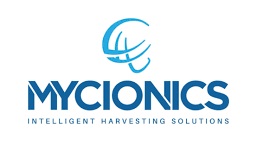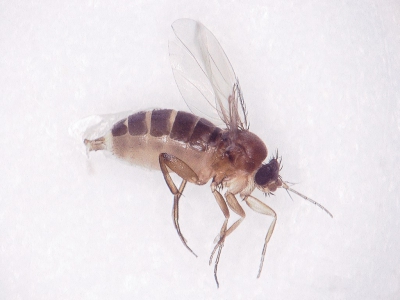Phorid larvae are a dangerous pest in phase III mushroom cultivation, and they are hard to control. No management can lead to a total loss of the 3rd flush. In addition, quality losses, distressed pickers, and fed-up neighboring communities are causing extra work you like to avoid. The flies get drifted into the houses of neighbors and like to accumulate under ceilings in e.g. warm bathrooms. Not a real pleasure when lying in the bathtub.
The larvae are obligated mycelial feeders therefore, the adult flies are not attracted to oviposit in the compost until after spawning. The up to 6 mm long larvae feed on the growing mushroom mycelium but rarely on the fruiting body itself. They can be distinguished from sciarid larvae by the absence of the black head, and they develop more rapidly into pupa.
Phorid fly larvae in the compost Adult female phorid fly (courtesy of Penn State University)
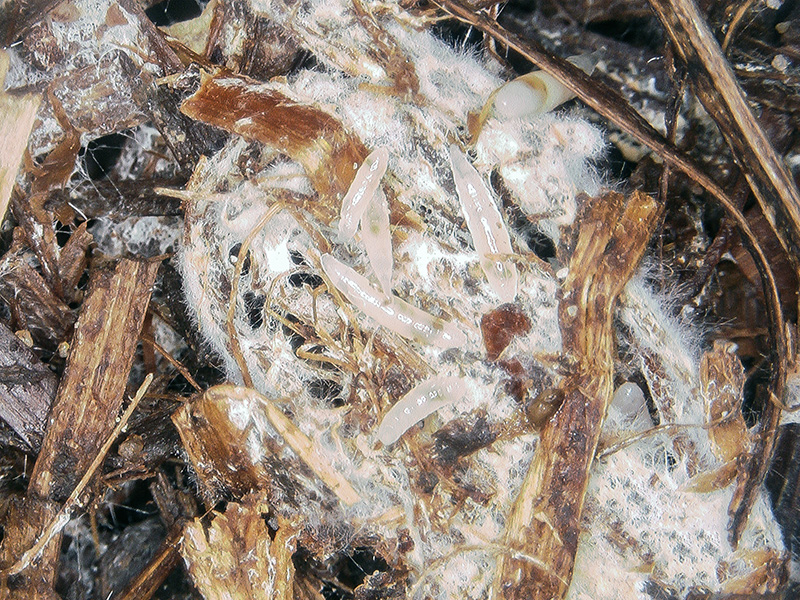
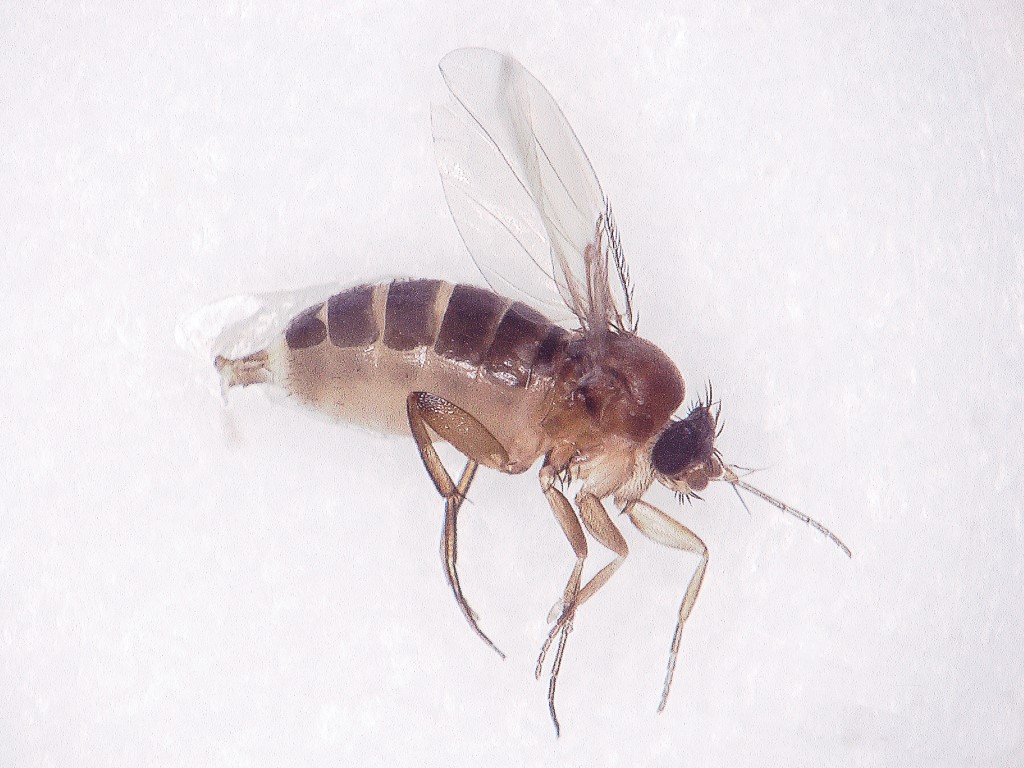
The adult fly can be distinguished from the sciarid fly by the short antennae and by its rapid, jerky, running movement. Adult phorids act as a vector for dry bubble. 75 flies per m2 may already cause an outbreak of the disease. Phorid flies are unable to fly when the temperature falls below 12°C (54°F). In the past they have rarely infected mushroom houses after late fall. As there are now more and more warm days into November, this period is prolonged. The start of the nematode application should be in the early summer. If the fly population is fully built up it is too late.
Further improving the already effective application of nemycel® phorid fly
For around two years nemycel® phorid fly is used in phase III mushroom cultivation in the U.S. and Europe with effective control. After accessing the data and further research, we recommend the following change in the application:
Old application recommendation:
|
Day 2 |
Day 18 |
|
1.6mio/ m2 |
1.6 mio/m2 |
The Phorid fly has a short larvae stage which is hard to target. The larvae are only susceptible 4-5 days (at 25°C / 77°F) for nematode infestation. The nematodes last for 5 days in the compost. Therefore, a change to multiple applications with one bigger hit at casing and then less dosages later control significantly more larvae. The larvae stop feeding fast after infestation and die after 2-3 days. The nematodes multiply inside the larvae cadaver and get out to prey on more larvae after 7-10 days.
Nematodes reproduce inside the larvae Dissolved larvae cadaver and nematodes
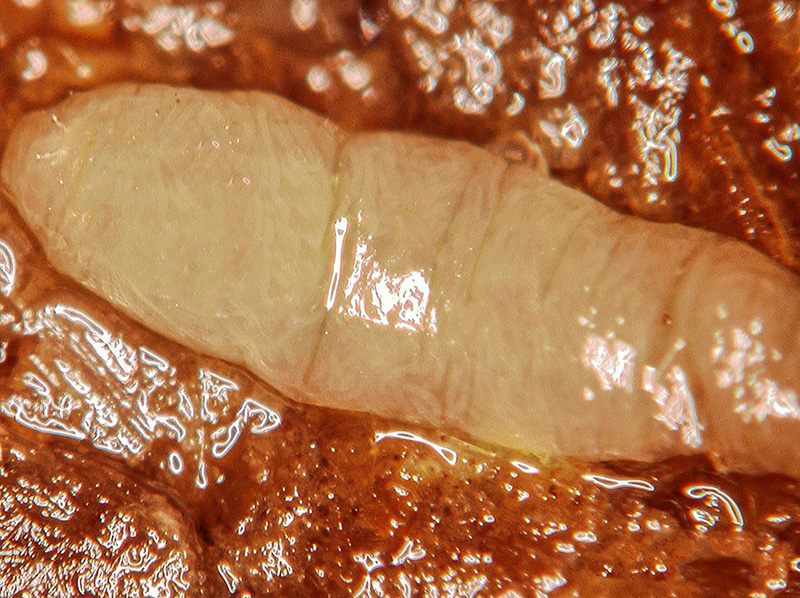
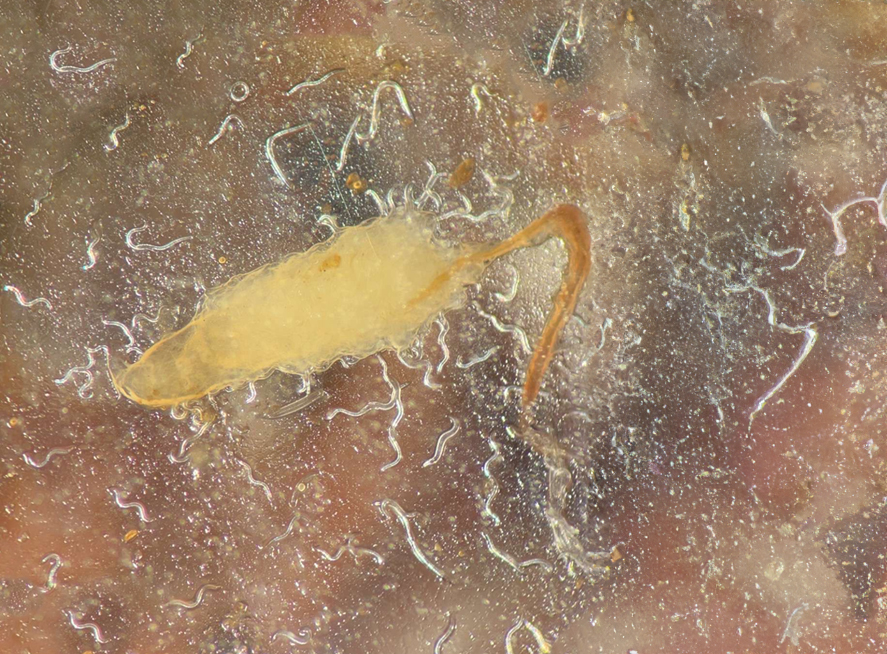
New application recommendation:
|
At casing - apply on compost |
Day 3-4 after casing |
Day 9-10 after casing |
Day 15-18 after casing, before 1st flush |
After first flush |
|
1.6mio/ m2 |
0.8 mio/m2 |
0.8 mio/m2 |
0.8 mio/m2 |
0.8 mio/m2 |
Control with nematodes, in combination with the farms IPM can lead to 25% more harvest, more A grade mushrooms, better working conditions for the pickers and a good relationship to your neighboring communities. Multiple applications improve efficiency significantly.
nemycel® phorid fly is a fully organic insecticide without micro plastics and made in Germany. No resistances are known of. The product is harmless for humans, pets, water, and the environment. No protective clothing is needed, and your workers don’t need to undergo security training.
This research was done by the Mushroom Fly Research Team at Penn State, by Dr. Michael Wolfin and Malachi Brought. This research on mushroom farms is still ongoing to find the most effective application rates and schedules.
More information about nematode application in mushroom cultivation can be found on:
https://www.e-nema.de/en/nematodes/professionals/application-areas/mushrooms/
All pictures and videos courtesy of M. Wolfin & M. Brought | Penn State University
--------------------------------------------------------------------------------------






